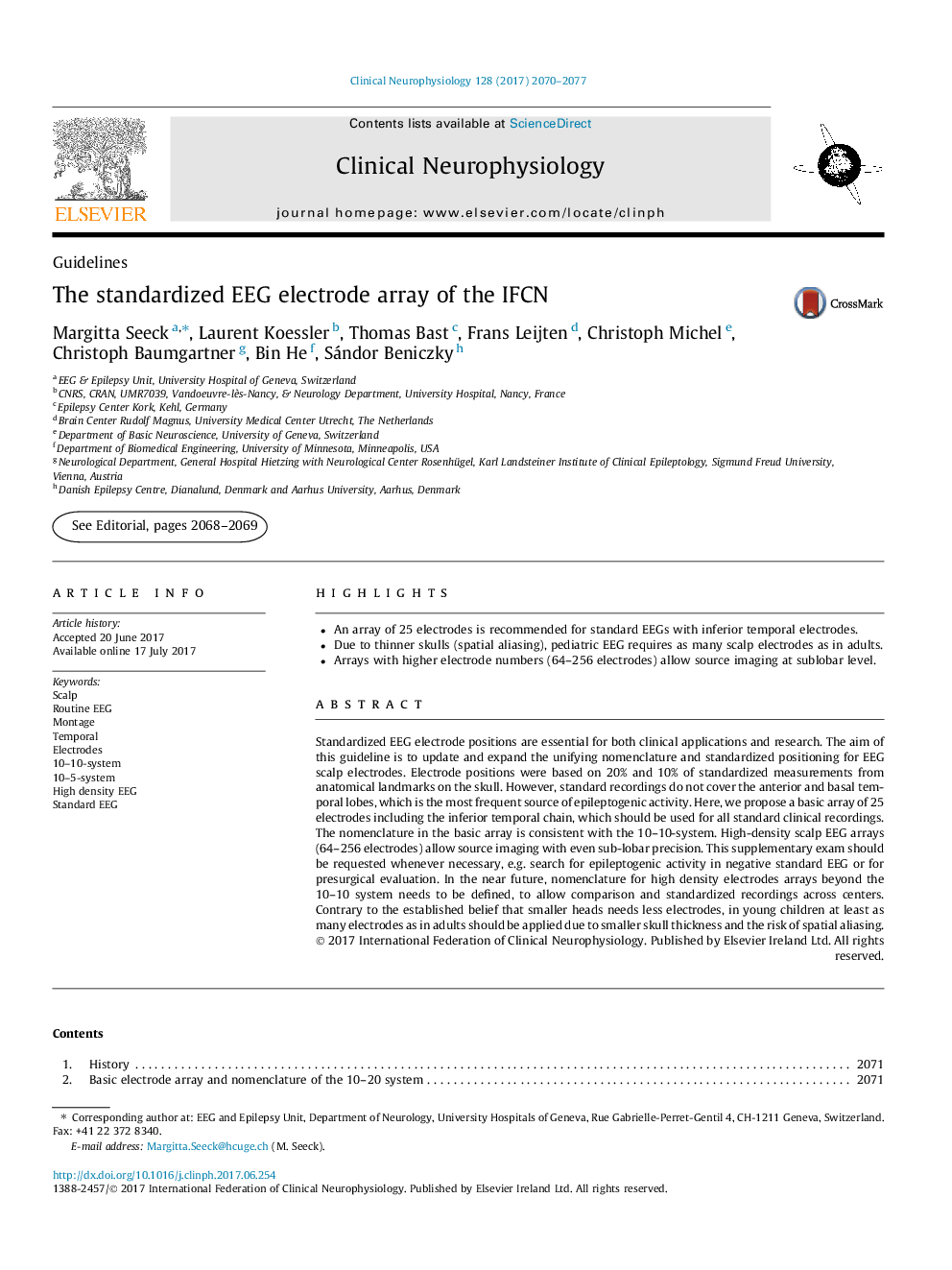| Article ID | Journal | Published Year | Pages | File Type |
|---|---|---|---|---|
| 5627691 | Clinical Neurophysiology | 2017 | 8 Pages |
â¢An array of 25 electrodes is recommended for standard EEGs with inferior temporal electrodes.â¢Due to thinner skulls (spatial aliasing), pediatric EEG requires as many scalp electrodes as in adults.â¢Arrays with higher electrode numbers (64-256 electrodes) allow source imaging at sublobar level.
Standardized EEG electrode positions are essential for both clinical applications and research. The aim of this guideline is to update and expand the unifying nomenclature and standardized positioning for EEG scalp electrodes. Electrode positions were based on 20% and 10% of standardized measurements from anatomical landmarks on the skull. However, standard recordings do not cover the anterior and basal temporal lobes, which is the most frequent source of epileptogenic activity. Here, we propose a basic array of 25 electrodes including the inferior temporal chain, which should be used for all standard clinical recordings. The nomenclature in the basic array is consistent with the 10-10-system. High-density scalp EEG arrays (64-256 electrodes) allow source imaging with even sub-lobar precision. This supplementary exam should be requested whenever necessary, e.g. search for epileptogenic activity in negative standard EEG or for presurgical evaluation. In the near future, nomenclature for high density electrodes arrays beyond the 10-10 system needs to be defined, to allow comparison and standardized recordings across centers. Contrary to the established belief that smaller heads needs less electrodes, in young children at least as many electrodes as in adults should be applied due to smaller skull thickness and the risk of spatial aliasing.
